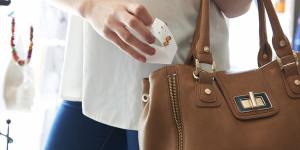Retail theft has increased in NSW by 12.6 per cent across the past two years,according to the latest data from the NSW Bureau of Crime Statistics and Research,with theft reaching pre-pandemic levels.
Crime Stoppers NSW chief executive Peter Price said shoplifting co-ordinated between informal groups of thieves was something he hadn’t seen before.

Retail theft in NSW rose 12.6 per cent in two years,according to the latest crime data.Getty Images/iStockphoto
Price said groups of 10 or so would each head to a different store and text one another about the number of staff,security presence,store size and cameras.
“Then they’ll cause a commotion and create a distraction while the other people steal,” he said,with the stolen items resold in person or online.
Price said co-ordinated crime could be difficult to prosecute,with encrypted messaging shielding the number of people involved,but it differed from organised crime as it does not involve professional criminal networks.

Sydney’s city and inner south had the highest rate of theft at 966.7 incidents per 100,000 population in the 12 months to March 2024.
Baulkham Hills and Hawkesbury had the lowest incident rate per population at 168. However,the number of offences increased by 31.4 per cent across the past two years.
The Richmond-Tweed,Southern Highlands and Shoalhaven regions experienced the greatest surge in retail theft,with incidents rising by 96.3 and 70.1 per cent across the past two years.
‘Substantial concern’
Shopping Centre Council of Australia executive director Angus Nardi said he was incredibly concerned about the rise of violence and weapon use associated with retail theft.
While the organisation doesn’t publicly release data,Nardi said there had been a year-on-year increase in the number of violent or armed incidents in shopping centres.
“There’s a toxic mix of prolific and high-harm offenders … which is a key challenge and causing substantial concern,” he said.
He welcomed new laws passed this month giving NSW Police the power to use handheld scanners to check for knives in shopping precincts,sporting venues and public transport stations.
Australian Retail Association chief industry affairs officer Fleur Brown said the rise in crime came as many businesses were doing it tough.
“For many retailers,that’s quite a blow in a year that’s already tough with pronounced spending slowdown and the rising cost of doing business,” she said,adding that increased wages,energy and supply chain costs and increasing price of goods and services were taking their toll.
“We are deeply concerned about the impact of retail theft on the wellbeing of the retail workforce and the flow on effect on the bottom line,” she said.
The ARA estimates shoplifting costs retailers more than $9 billion a year.
A NSW Police spokesperson said officers regularly and proactively target retail theft across the state,including high-visibility operations aimed at recidivist and opportunistic offenders.
“Officers work closely with shopping centre management,as well as loss prevention officers and other relevant stakeholders to run these proactive operations,which occur regularly throughout the calendar year across the state … This sort of criminal behaviour will not be tolerated,” the spokesperson said.
